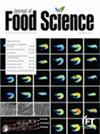We hypothesized that removing water from fish muscle homogenate by freeze-drying might be a cost-effective way to stabilize nutrients and allow higher temperatures for long-term frozen storage prior to analytical measurements. To test our hypothesis, fish muscle fillets from lipid-rich farmed Atlantic salmon (n = 5) and lean wild-caught European plaice (n = 5) were homogenized and fresh-frozen at −20 and −80°C. A subset of these samples was freeze-dried prior to further frozen storage at the respective temperatures. Using validated methods, vitamins, amino acids, and fatty acids were measured after a short time of storage (starting point) and up to 1 year (endpoint), with intermediate analytical checkpoints of 1, 3, and 6 months. Trends in the degradation of certain nutrients during the different frozen storage conditions are discussed. In general, by freeze-drying fish homogenate samples prior to frozen storage at −20°C for up to 1 year, amino acids, vitamins, and fatty acids were stabilized in both salmon and plaice when compared to wet-frozen storage of the same samples, and storage at −80°C did not improve preservation of the freeze-dried samples. For wet-frozen samples, −80°C would be recommended for 1-year storage of fillet homogenate samples, even though several nutrients preserved well at −20°C.
We present individual nutrient stability profiles in muscle homogenates from fatty fish (salmon) and lean fish (plaice) during different frozen storage conditions over time. Based on these data, freeze-drying followed by frozen storage at −20°C for at least 1 year could be applied prior to analyses of amino acids, fat-soluble vitamins, water-soluble vitamins, and fatty acids. Of note is that freeze-drying followed by frozen storage before analysis led to slightly increased measurements of several fatty acids in plaice samples, possibly attributable to an increase in dry weight or an enhancement in extraction efficiency through freeze-drying.



